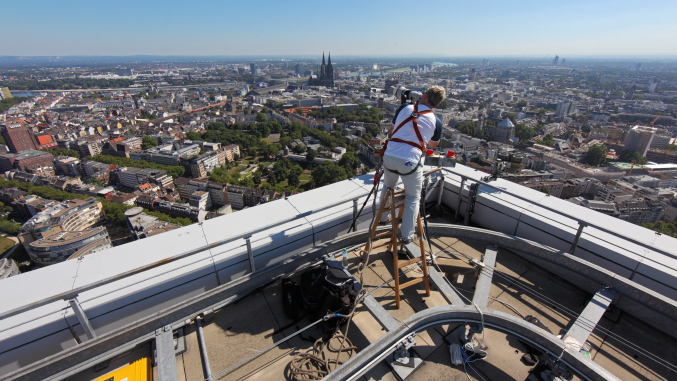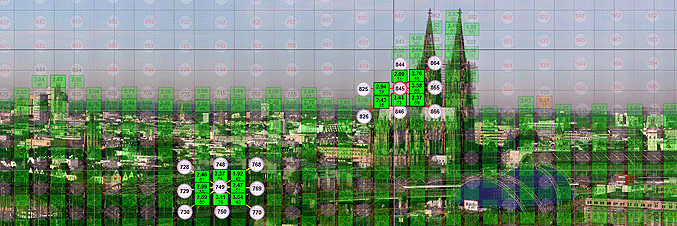Trivia
What kind of equipment is needed?
You will need a high-quality system camera with an excellent telephoto lens, a fixed tripod and a motorised camera head. Further requirements: suitable weather conditions. A cloudless sky and clear views would be perfect. Unfortunately such conditions are the exception rather than the rule.

Once having taken the shot, approximately 1,000 - 5,000 photos must be stitched together into one, which requires a high-performance computer and, above all, an excellent stitching programme.
 Lately, we have used the following items of equipment:
Lately, we have used the following items of equipment:
Cameras:
Canon EOS 5DsR, Canon EOS R5, Canon EOS M6 Mark II
Lenses:
Sigma 1,4/105 mm ART
Sigma 1,8/135 mm ART
Canon EF 2.0 200 mm L
Canon EF 2.8 200 mm L II
Canon EF 2.8 300 mm L
Canon EF 4.0 500 mm L
Canon EF 4.0 600 mm L II
Canon EF 4.0 600 mm L III
Canon EF 4.5-5.6 100-400 L IS II
Canon RF 4.5-7.1 100-500 L IS
Canon Extender 1.4 x III
Canon Extender 2 x III
Pan heads:
Gigapan Epic Pro
Nodal Ninja MECHA DAC
Seitz VR Drive
Computer:
Fujitsu R920, 16 cores / 32 threads
Main memory: 128 GB
Swap space: 5 TB SSD
Stitching software:
Kolor Autopano Giga
PTGui
Gigapan Stitch.Efx
Editing tool:
Adobe Photoshop CC
GigaPXTools
Viewer:
Zoomify HTML5 Pro
These are not recommendations; other tools are also possible.
Why "Super"GigaPixel?
The prefix "super" in "SuperGigaPixel" stands for optimised motifs. Image data shall be stored as efficiently as possible. With the most state-of-the-art camera and lens systems and with the clear focus on appropriate image content. In this sense, particular emphasis is given to the actual, usable resolution in the picture rather than maximisation of the file size.
What does "Max. magnification" in the image properties section of the gigapixel viewer mean?
The value of the max. magnification represents the zoom depth, in other words: How much can one zoom into the image compared to a normal angle of view.
The reference value is the viewing situation of the human eye looking onto an image taken with a full frame camera and a 50 mm lens on a FullHD (1920x1080 px) screen at a comfortable viewing distance (1 arm's length).
The focal length of 50 mm on a full frame camera gives approx. the same perspective than the human eye looking at an object in an arm's length. Thus the max. magnification is defined by 3 factors:
Factor 1: Focal length used for shooting the gigapixel image divided by 50 mm
Faktor 2: Crop factor of the camera sensor (1 for full frame sensor)
Faktor 3: Image height in pixels devided by the image height of a FullHD screen (1080)
Example:
Shot with Canon EOS 6D (sensor height: 3,648 px, crop factor 1) and 600 mm tele lens:
600 / 50 * 1 * 3648 / 1080 = 40.5 x
The number of pixels of a gigapixel image doesn't tell anything about the magnification, because a certain image size (for instance 10 gigapixels) can be either achieved with a low magnification but large angle of view or a high magnification and a smaller angle of view.